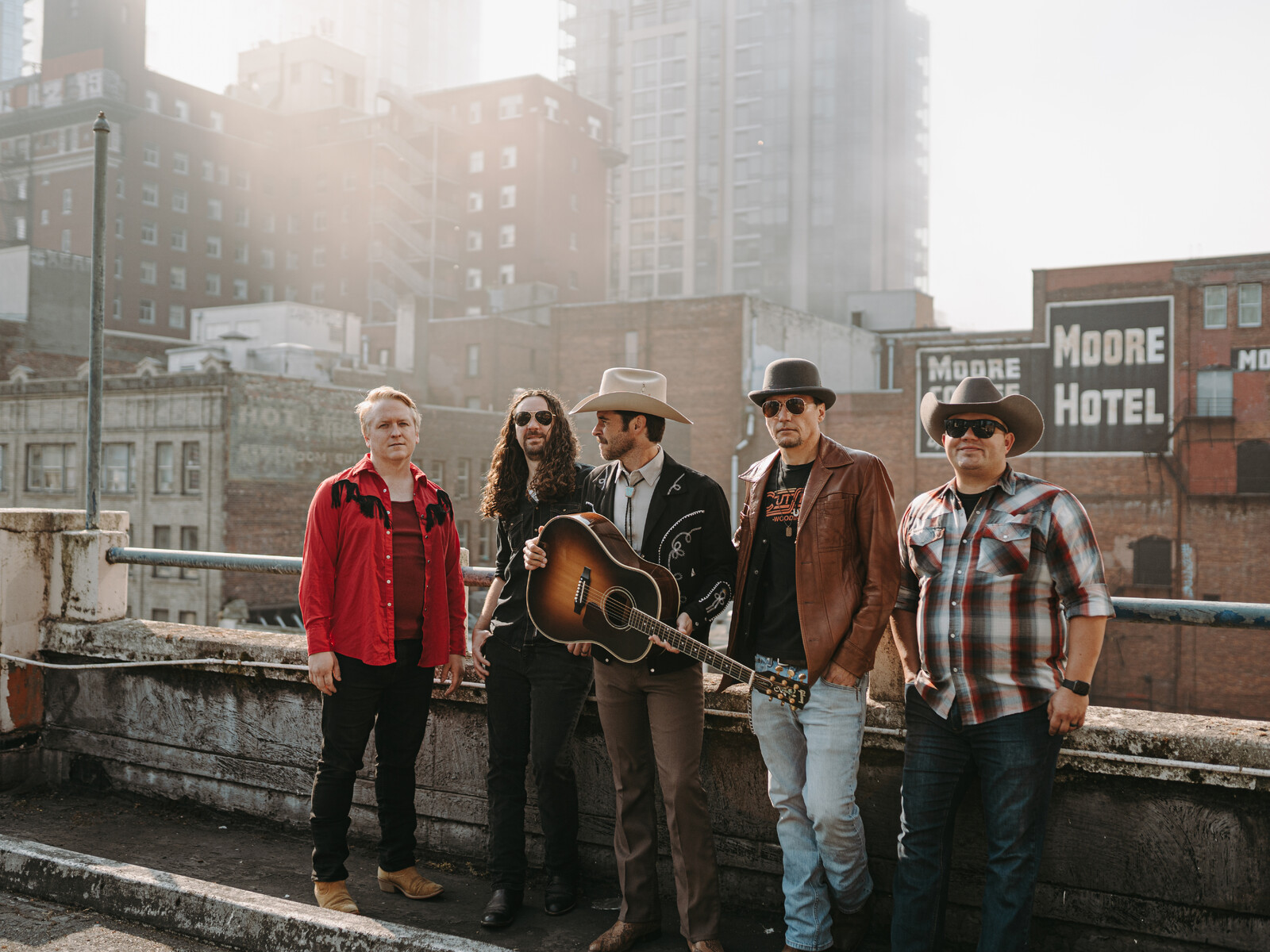
If you're in a saloon right now, chances are you could be hearing the music of Santa Poco. The stuff is in the air, in the water, part of the condensation on your bottle of beer, it's that elemental. It's like common sense. Slide guitars and the clack of boots on the floor slats. It's the jangly acoustic with the pitter-patter snare. The bend of the electric solo, the voice coming in again above it all. It's the music of Cowboy Songs, the latest offering from the Pacific-Northwest group. Basking in the band's music, it's clear: they have a sumptuous energy, the kind that gets you to dance on your heels but lead with your hips. The band is a veritable jukebox, your favorite Roadhouse radio station as you speed that extra hour through the bleary night highway. The band's new 11-track record accompanies like a K-9 friend might, bandana around its furry neck, jaw resting in its front paws, yet ready for action. Santa Poco recorded its latest album in a log cabin in snow-capped Leavenworth, Washington, and finished the record in a log cabin in rural Roslyn. It was mixed by Kevin Redlich and mastered by Ed Brooks. But the thing about music that floats in the air like cherished common knowledge is that each track in the collection is savory. It's all smooth sarsaparilla and shots of top-shelf whiskey including the band's anthemic, "Something About The Whiskey" . The LP's titular opener enlivens in a way that makes you tip your cap and show your pearly whites. Throughout Cowboy Songs, Santa Poco employs an expert sense of subtlety and musicianship, offering touches of keys, organ, harmonica and even violin. All the while keeping a sense of tradition. For example, on "Shoot Out The Lights", bright guitars mix with raspy vocals and galloping drums. And the LP continues with hearty, reflective songs like "Find Yourself A Woman" the penultimate, "Never Looked Better". While the world knows and understands that Nashville is at the center of the country music landscape, it should be clear now, with Cowboy Songs, that the rough and rugged landscape stretches all the way to the Pacific Northwest, where Santo Poco stands out.